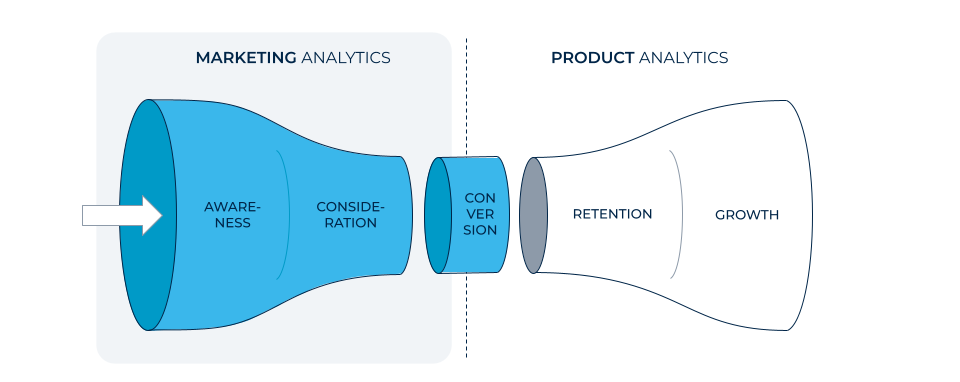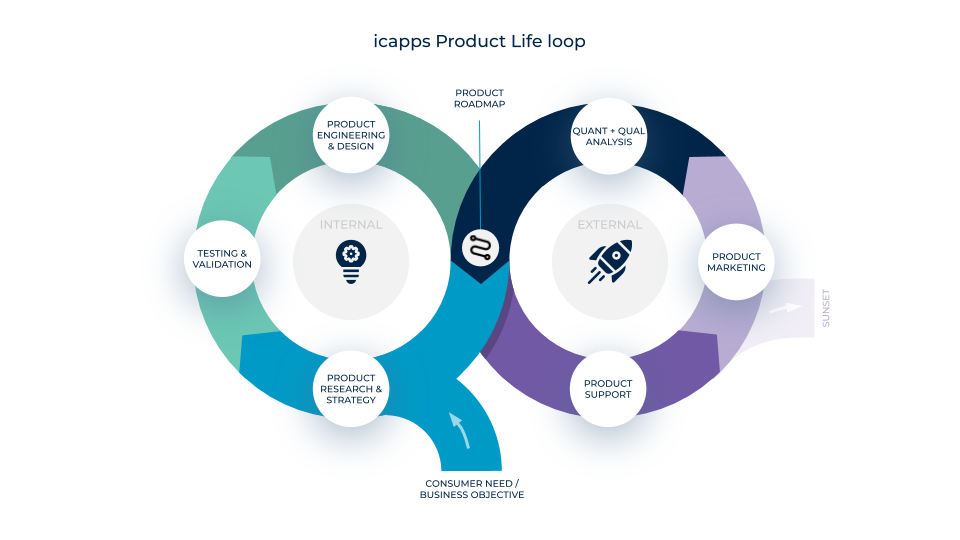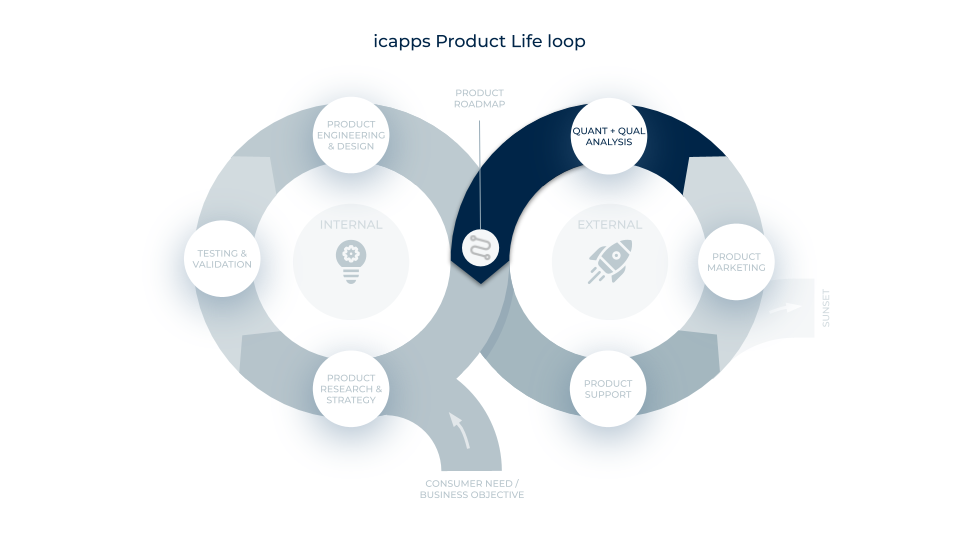In this blog, we'll explore the significance of product analytics, its integration into the product lifecycle, and how it becomes a universal language influencing stakeholders. We'll also emphasize its role as a crucial component supporting the product roadmap, guiding decisions at every stage.
Additionally, we'll touch on the essence of effective analytics, quoting, "The truth is you're never going to find a signal in the noise if you try to track everything and hope an answer or insight appears in front of you."
Transitioning from strategy to metrics, we'll discuss how to start with analytics, emphasizing the importance of a clear vision and strategy. We'll introduce the OKR framework as a tool to structure and direct efforts, linking it to the analytics journey. Read on!
There’s Analytics … and Analytics
When we talk about analytics, we can talk about Marketing or Product analytics. While both are crucial in business strategies, they serve distinct functions and focus on different aspects of a business. Before diving into them separately, let's give you a quick look at the difference:
Marketing analytics primarily concentrates on understanding and optimizing how marketing efforts contribute to overall business goals. It involves analyzing data related to market trends, customer behavior, campaign performance, and the overall effectiveness of marketing strategies. This type of analytics helps businesses tailor their marketing campaigns, segment their audiences, and optimize their spending to increase customer engagement and conversions.

Product analytics, on the other hand, is more focused on the product itself. It involves analyzing user interactions with a product to gain insights into user behavior, preferences, and pain points. This type of analytics helps businesses understand how users engage with their product, identify features that are most used or may need improvement, and guide product development decisions. Product analytics is critical for improving user experience, increasing product engagement, and ultimately driving product-led growth. In essence, while marketing analytics is about attracting and retaining customers, product analytics is about enhancing the user experience and the product's value proposition.
Building products that count
An introduction to product analytics
Product analytics is the continuous process of analyzing how users engage with a product. It keeps the product connected to the user by providing data analyses necessary to understand where a product may be falling short, and helps to identify opportunities for growth.
In the landscape of product development, the incorporation of analytics is no longer a luxury but a necessity. Product analytics has a crucial role and needs to be integrated into every phase of the product lifecycle.
The necessity of integration
Product analytics should not be an isolated activity performed by a select few; it must become a part of the continuous process within an organization. Its survival and effectiveness depend on this integration. When analytics is cornered into a niche by a limited group, its impact diminishes rapidly. Therefore, we believe embedding analytics into the entire workflow is imperative.
To illustrate this, let's examine our approach. We begin with identifying consumer needs, followed by strategic thinking about the vision and conducting thorough research. The next steps involve testing, development, launching, and maintenance of the product, ensuring it remains viable and competitive.

Post-launch, the role of analytics is crucial. It's through rigorous analysis that we understand consumer perceptions, allowing for agile adjustments and improvements.
Analytics should not be the sole concern of product managers or technical teams. Its impact is far-reaching, influencing all stakeholders in the product process. Designers, marketers, and decision-makers can all benefit from insights derived from analytics. It helps in refining design, understanding consumer trends, and making informed decisions. Analytics thus becomes a universal language, guiding the organization towards alignment with its objectives and necessary adjustments in design and features.

Your roadmap’s sidekick
Analytics should be viewed as a crucial component supporting the roadmap of a product. In an ideal scenario, the roadmap is a platform where stakeholders converge to set focus areas for coming quarters. Data supports and guides these decisions, regardless of the size of the company or the stage of the product or team.
Every phase of a product's journey benefits from analytics. Its integration elevates the product's potential to meet consumer needs and achieve strategic objectives. It's your quickest path to achieving product-market fit. Ignoring this integration relegates analytics to a neglected corner, diminishing its potential impact. Hence, embracing product analytics is not just setting a high standard; it's a stride toward enduring success in the dynamic world of product development.


